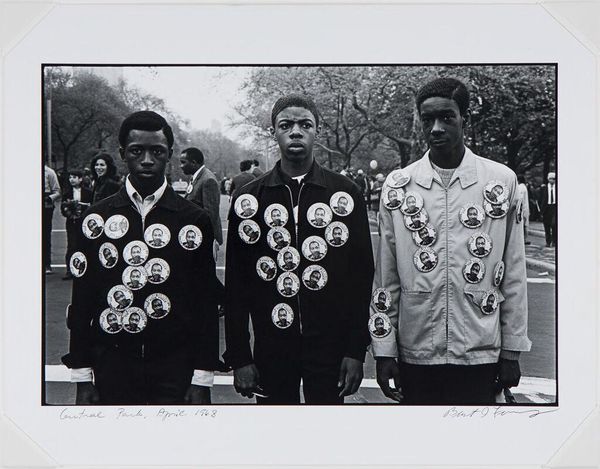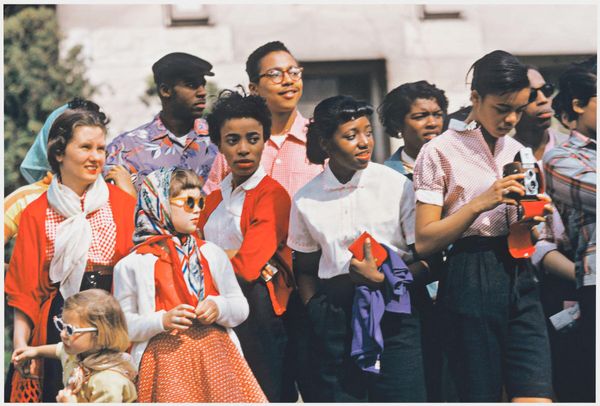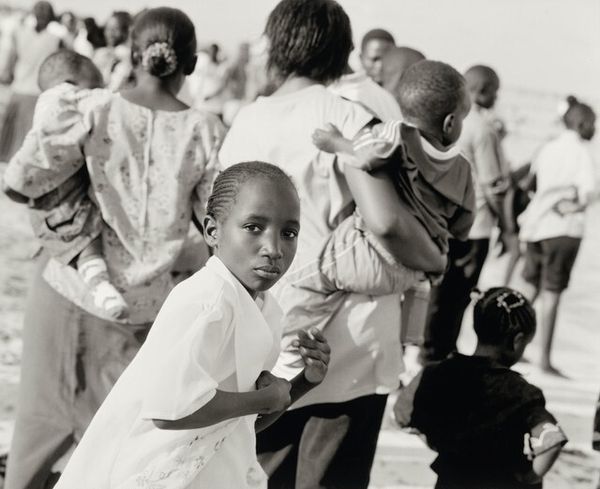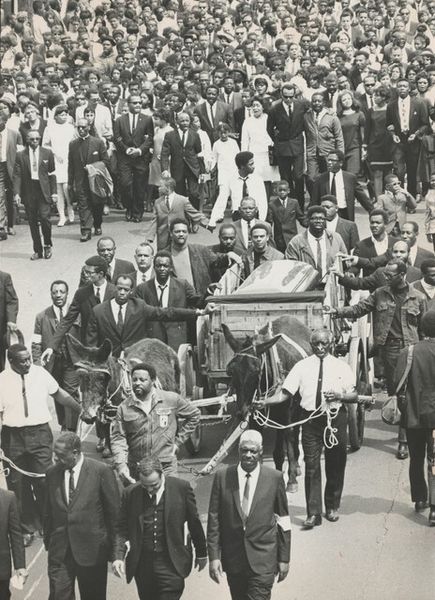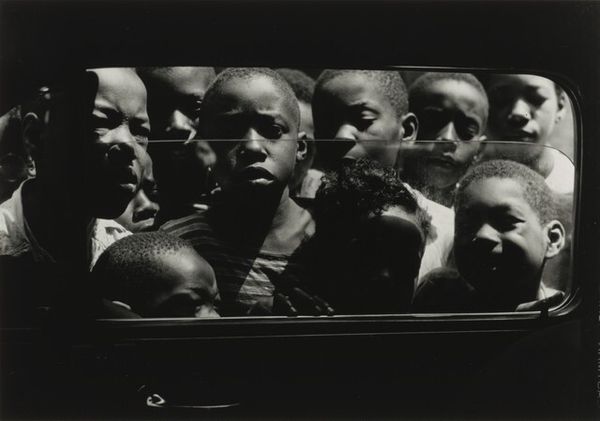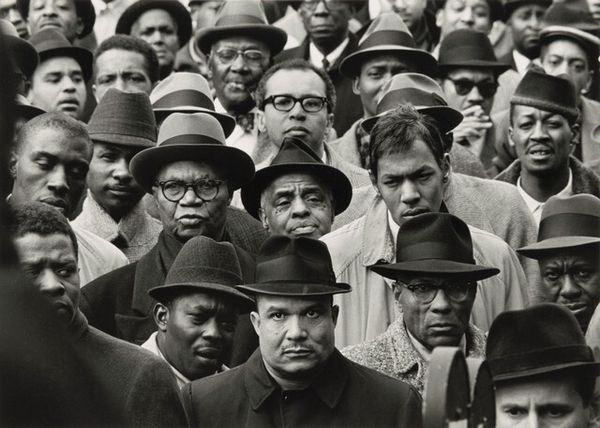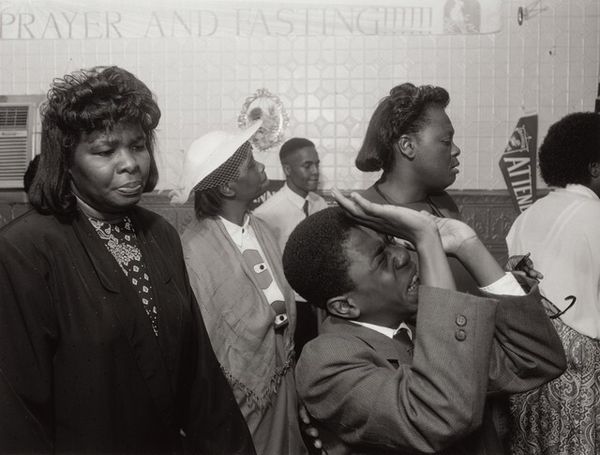
High School Drum Corps, West Oakland, California c. 1963 - 1971
0:00
0:00
photography, gelatin-silver-print
#
portrait
#
black and white photography
#
street-photography
#
photography
#
black-arts-movement
#
group-portraits
#
black and white
#
gelatin-silver-print
#
monochrome photography
#
monochrome
#
realism
#
monochrome
Dimensions: image: 26.6 × 24.8 cm (10 1/2 × 9 3/4 in.) sheet: 35.3 × 27.9 cm (13 7/8 × 11 in.)
Copyright: National Gallery of Art: CC0 1.0
Curator: Joanne Leonard's gelatin silver print, "High School Drum Corps, West Oakland, California," believed to have been taken sometime between 1963 and 1971, presents us with a powerful image. What's your initial read? Editor: The monochrome tonality amplifies the rigid formality. The composition itself—the rows of young drummers— speaks of regimentation, the weight of those drums almost palpable. Curator: That formality, and the period the image was taken in, bring the Black Arts Movement to the fore, especially the group's commitment to self-determination and cultural pride amid significant racial tension and social change. Each face seems to hold a quiet resilience. Editor: The repetition of form - drums, uniforms, faces - speaks to the standardization involved in manufacturing both culture and identity. And yet, individual nuances manage to peek through in their haircuts and subtle variations of stance. I can't help but wonder about the specific drum-making practices, where were those materials sourced from, what are those individual instruments made out? Curator: Thinking about this as a gelatin silver print, within the specific political contexts of the Black Arts Movement, transforms our understanding of the choices regarding the specific form. It transcends mere documentation, becoming an assertion of presence, identity, and artistic autonomy in a society grappling with questions of equality and representation. Editor: True, the intentionality cannot be dismissed. Yet, let's not romanticize. Gelatin silver printing was a fairly standard means of photographic reproduction at this time. It would be very fruitful to unpack, instead, what accessible techniques allowed underrepresented voices a way to surface—to produce the material means of their own self representation and self definition. What labour goes into maintaining a drum corps such as this? What access do the families involved have to other forms of expressive material creation? Curator: The tension between those interpretations provides fertile ground for considering how this powerful portrait exists at the intersection of social narrative, artistic intention, and the realities of materials. Editor: Exactly! Considering its moment of creation allows us to analyze it beyond simply a document—and begin to grasp the intertwined systems that produce not only photographs but our very understanding of history itself.
Comments
No comments
Be the first to comment and join the conversation on the ultimate creative platform.

